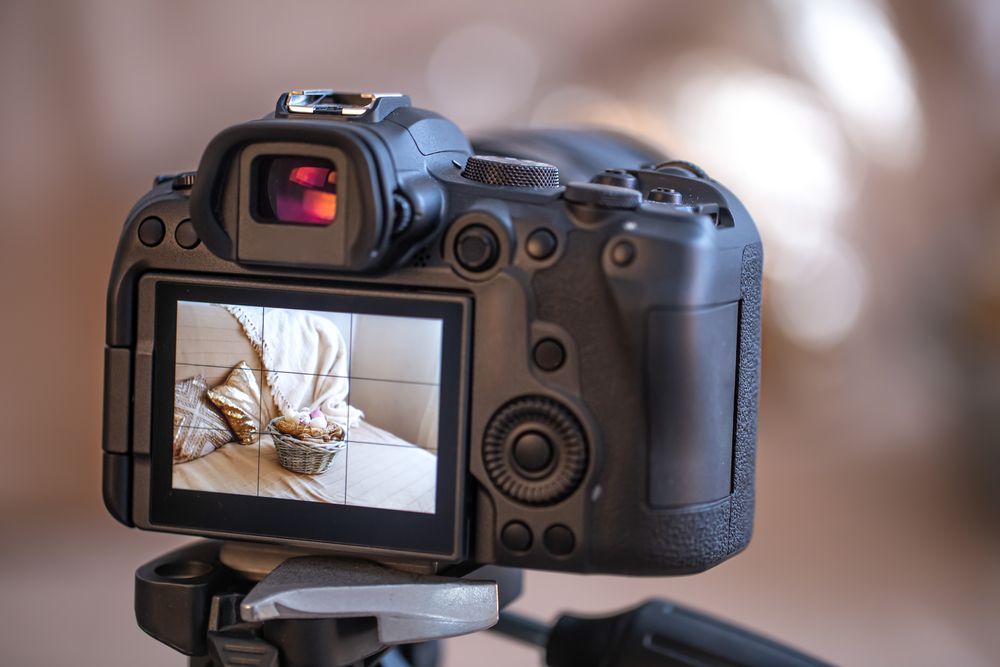Smartphone cameras are more advanced than ever, but how are digital cameras still a thing? While smartphones offer convenience and portability, dedicated digital cameras continue to provide significant advantages, from superior image quality and optical zoom to better low-light performance and greater manual control. Whether you're an aspiring photographer, a content creator, or someone who values high-quality imagery, digital cameras still have a place in today’s tech-driven world.
1. Understanding Different Digital Camera Types
From compact point-and-shoots to advanced mirrorless systems, each category of digital camera brings unique strengths in portability, functionality, and performance. Matching the camera type to your shooting style is the first step in ensuring you can capture that perfect angle anywhere.
Key Categories
- Point-and-Shoot Cameras
- Features: Lightweight, pocketable, fixed lens, often automatic settings.
- Pros: Great for travel or casual use, simple operation, more zoom range than most smartphones.
- Cons: Smaller sensors than advanced models, limited manual control, lens can’t be changed.
- Bridge Cameras
- Features: Larger than point-and-shoot, DSLR-like body, fixed superzoom lens.
- Pros: Big zoom range for wildlife or sports, integrated controls for manual settings.
- Cons: Typically smaller sensor than mirrorless/DSLR, meaning less low-light performance.
- Mirrorless Cameras
- Features: Interchangeable lenses, electronic viewfinder (EVF) or LCD for framing, generally smaller and lighter than DSLRs.
- Pros: Large sensors (APS-C or full-frame) for excellent image quality, advanced autofocus, quiet operation, broad lens options.
- Cons: Battery life can be shorter, some high-end models can be pricey, lens ecosystems vary by brand.
- DSLRs
- Features: Traditional design with optical viewfinder, mirror mechanism, interchangeable lenses.
- Pros: Robust lens selection, excellent battery life, often strong build quality.
- Cons: Bulkier, heavier, the mirror system adds moving parts.
- Action Cameras
- Features: Small, rugged, wide-angle lens, designed for extreme sports or underwater use (with a case).
- Pros: Ultra-compact, durable, often waterproof, perfect for POV angles.
- Cons: Limited zoom or manual control, often fish-eye effect, smaller sensor.
2. Sensor Size and Image Quality
Sensor size influences how much light is captured and the resulting image quality. Larger sensors typically yield better low-light performance, dynamic range, and the ability to produce a shallow depth-of-field.
Common Sensor Sizes
- 1/2.3-inch or 1-inch (Compact/Bridge cameras)
- Standard in many point-and-shoot or superzoom models. Good for casual usage, though smaller sensors can struggle in dim light.
- APS-C (Crop Sensor in many mirrorless/DSLRs)
- Balanced approach between cost, size, and performance. Suitable for intermediate to advanced photography.
- Full-Frame (Mirrorless/DSLR Pro Level)
- Larger sensor matched to 35mm film size. Delivers top image quality, dynamic range, and better performance in low light. Often used by pros or serious hobbyists.
- Micro Four Thirds
- Slightly smaller than APS-C, found in some mirrorless lines. Good compromise of compact body, decent image quality, and lens variety.
3. Lens Considerations and System Ecosystem
The lens is critical to capturing “every angle” as it shapes focal length, aperture, and how you frame your shots. Interchangeable lens systems (mirrorless/DSLR) allow for wide-angle landscapes, telephoto for wildlife, or specialized macro shots, while fixed-lens cameras rely on the built-in zoom range.
For Interchangeable Lens Cameras
- Lens Range: Investigate brand lens ecosystems or third-party support. A broad selection ensures you can expand your kit for wide-angle, telephoto, macro, etc.
- Budget: Good lenses can be costly, sometimes rivaling or exceeding camera body price. Factor lens cost into your overall plan.
- Future Growth: If you’re serious about photography, investing in a robust lens library can outlast multiple camera bodies.
For Fixed-Lens Cameras
- Zoom Capability: Bridge cameras can have 50x or 60x zoom, great for wildlife or sports from afar.
- Aperture Range: If you want more control over background blur, a lens with a brighter (lower number) aperture is beneficial.

4. Camera Features and Connectivity
Modern digital cameras often pack extras—like advanced autofocus, in-body stabilization, or Wi-Fi. Knowing which features truly help you achieve varied angles or improved shooting can guide a better buy.
Key Feature Examples
- Articulating Screen: Flip-out or tilt screens help you shoot from low angles, overhead, or even for vlogging.
- In-Body Image Stabilization (IBIS): Reduces camera shake, crucial for handheld shots in low light or with telephoto lenses.
- High-Speed Autofocus: If capturing fast-moving subjects (sports, wildlife, kids), check for robust AF systems.
- Connectivity: Wi-Fi or Bluetooth can seamlessly transfer images to your phone or control the camera remotely—useful for tricky vantage points or group shots.
5. Budgeting and Finding Deals
Digital cameras can range from under $300 for entry-level compacts to thousands for full-frame mirrorless with pro lenses. Clarifying how serious you are about photography and which features matter most helps avoid overspending or underspending.
Strategies
- Buy Used or Refurbished: Last-year’s model or a well-maintained used camera can be significantly cheaper while still offering excellent performance.
- Lens Investment: If going mirrorless/DSLR, consider starting with a body plus a versatile kit lens, then gradually add specialized lenses.
- Promotions: Watch for holiday sales, brand promotions, or bundle deals that include lenses or accessories at a discount.
6. Practical Testing and Reviewing Real-World Feedback
Specs alone—like megapixels or ISO range—don’t always convey how the camera handles in real life. A camera’s ergonomics, color science, and reliability are better evaluated by user or professional reviews and hands-on trials if possible.
Advice
- Try In-Store: Holding the camera, checking button placement, and seeing how the viewfinder or screen looks can reveal comfort issues you won’t spot online.
- Check Sample Images: Online reviews typically showcase real photos or videos from that camera model. Evaluate clarity, color, dynamic range.
- User Experience: Are the menus intuitive? Does it fit your hand size? How heavy is it with a lens attached?
Finding the perfect digital camera for capturing “every angle” means aligning your needs—like what you love to shoot (portraits, landscapes, action), how serious you are about manual control, and your willingness to invest in lenses—with a camera design that supports those aims. From point-and-shoots that slip neatly into a pocket to mirrorless powerhouses that excel in versatility, or robust DSLRs with huge lens ecosystems, there’s a camera option for every budget and ambition.
The key is to focus on sensor size (which largely dictates image quality), lens choices (especially for interchangeable systems), and convenience features (like articulating screens or Wi-Fi) that suit your shooting style. If you’re after top-notch results or plan to grow your photography hobby, an APS-C or full-frame system might be the best bet. Meanwhile, those who prefer an all-in-one solution for casual everyday shots might be served well by a compact camera with a decent zoom or an advanced bridge camera.
No matter your path, remember that cameras truly shine when matched to how and where you like to shoot. With thorough research, potential testing, and a clear sense of how much you’re willing to spend, you’ll land on a digital camera that emboldens your creativity and ensures you never miss that perfect shot from any angle.


